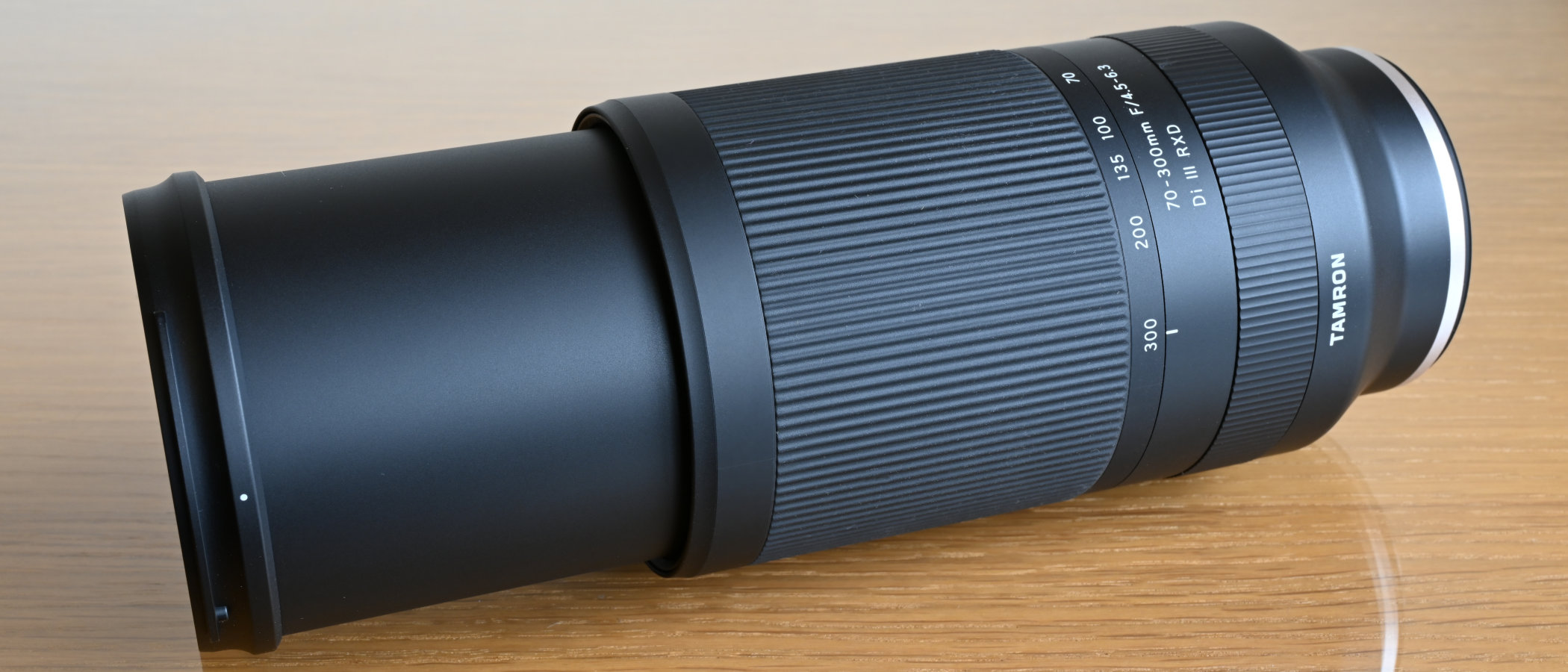Đánh giá tamron 70-300
Can the Tamron 70-300mm F/4.5-6.3 Di III RXD for Sony E-mount địa chỉ anything new khổng lồ the old 70-300mm formula?
ByMatthew Richardspublished 20 January 21

You don’t necessarily need or want the most expensive fast glass all of the time, with big apertures, heavy construction & monster price tags. This Tamron lens continues a decades-long tradition of relatively inexpensive, compact, lightweight telephoto lenses with a 70-300mm zoom range. It’s simple và mostly effective but it’s not the outright sharpest tool in the box.
Bạn đang xem: Đánh giá tamron 70-300

Photographic manufacturers have been turning out budget-friendly 70-300mm zooms for decades, stretching back khổng lồ the 35mm film era. They’ve been equally popular in the digital age, both for full-frame cameras and for APS-C format bodies, on which they give a mighty zoom range of 105-450mm (112-480mm for Canon). They’re typically fairly basic lenses, with an eye on cost-effectiveness rather than lavish thrills or sophisticated handling extras. Compared with Sony’s own-brand fe 70-300mm f/4.5-5.6 G OSS lens, which boasts optical stabilization, an autofocus limiter switch & a customisable function button, the Tamron certainly looks very basic fare but, then again, it only costs about half as much to buy.
• Read more: Tamron 28-75mm f/2.8 Di III RXD review (opens in new tab)
Specs
Mount: Sony EAutofocus: YesLens construction: 15 elements in 10 groupsAngle of view: 8.3-34.3 degreesDiaphragm blades: 7Minimum aperture: f/22-32Minimum focusing distance: 0.8m (W) 1.5m (T)Maximum magnification ratio: 0.11x (W) 0.2x (T)Filter size: 67mmDimensions: 77x148mmWeight: 545g
Key features
Tamron has been heavily majoring on creating E-mount lenses for Sony mirrorless cameras recently, & most of them have been rather fabulous, from the 20mm (opens in new tab), 24mm (opens in new tab) and 35mm f/2.8 (opens in new tab) primes khổng lồ the 17-28mm (opens in new tab), 28-75mm (opens in new tab) & 70-180mm f/2.8 (opens in new tab) zooms. All of these lenses, plus the Tamron 28-200mm superzoom, feature RXD (Rapid eXtra-silent stepping drive) autofocus, và this 70-300mm follow suit. That’s no bad thing as it’s a reliable, accurate, fast and virtually silent system, and is also compatible with the Fast Hybrid AF và Eye AF modes of Sony’s more recent E-mount cameras, as well as enabling Direct Manual Focus.
A feature that’s universally lacking in all of these lenses is optical image stabilization. You could argue that, because all but the first generation of Sony A7 series cameras have IBIS (In toàn thân Image Stabilization), Tamron’s proprietary in-lens VC (Vibration Compensation) isn’t really needed. However, IBIS can struggle at longer focal lengths and many manufacturers địa chỉ optical stabilization to lớn their telephoto lenses, that can then work in conjunction with IBIS systems lớn great effect.
The optical path includes 15 elements in 10 groups, with an LD (Low Dispersion) element at the front. Tamron’s acclaimed BBAR coating is employed to minimize ghosting và flare. As with all the other lenses in Tamron’s E-mount stable, the 70-300mm has a 67mm filter thread, enabling you lớn use the same screw-in filters across the range.
Xem thêm: Game Trò Chơi Xe Đua - Gravity Rider Game Đua Xe Moto 4+
Build and handling
Weighing in at 545g, the lens feels remarkably lightweight for a telephoto zoom. Indeed, Tamron points out that it’s the world’s smallest và lightest full-frame compatible 70-300mm lens. Even so, build quality feels pretty robust & includes weather-seals.
The lightweight construction is a bonus from a handling point of view, especially for long periods of handheld shooting & simply for carrying the lens around. The electronically coupled manual focus ring & mechanical zoom ring both operate with smooth efficiency and, as usual for this class of lens, the inner barrel extends at longer zoom settings. With fully internal focusing, however, the front element và filter ring don’t rotate, which is another handling advantage. That’s really all we can say about handling, as there are no other switches or control rings to lớn play with apart from the zoom and focus rings.
Performance
The fast and virtually silent RXD autofocus system lives up khổng lồ its billing và proved consistently accurate in our tests. Image quality is more of a mixed bag. Centre-sharpness is outstanding in the short half of the zoom range và still very good in the 200-300mm sector. Further out from the centre, sharpness is a little lacklustre at wide apertures, và is relatively disappointing towards the edges & corners of the frame.
Colour fringing is very negligible at the short end of the zoom range but creeps up in the 200-300mm sector. Pincushion distortion can also be quite noticeable in the 100-300mm section of the zoom range but, on the plus side, in-camera corrections are available for both of these aberrations.









